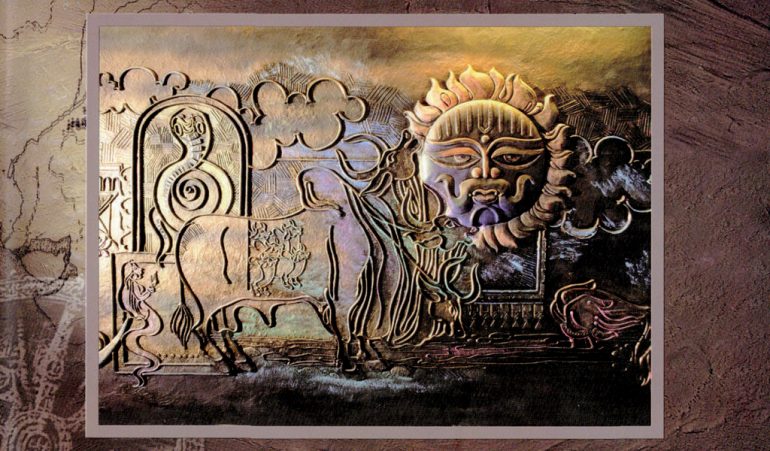The authors of “Hidden Horizons: Unearthing the 10,000 Years of Indian Culture,” David Frawley and Navaratna Rajaram, make a case of rewriting the history, especially of the Indian civilization. Presenting archeological and scientific evidence, the authors establish a connection between the ancient river, Sarasvati, which flowed in the subterranean region and the great civilizations that flourished along its banks, such as Harappa and Mohanjodaro. “Harappan archeology represents the closing phase of the Vedic civilization that began when Sarasvati was flowing from the ‘mountains to the sea.’ It ended when the Sarasvati dried up completely between 2200 and 1900 BCE.”
According to the authors, Sarasvati River, honored by Hindus as their main goddess, voice and homeland of the Vedic culture, has loudly proclaimed its existence through geological studies. This verifies the antiquity of Vedic cultures that Western historians, with their obsession with the West as the origin of all civilization, had so far failed to understand. Seven to eight thousand years ago when the sea level was rising due to the melting of glaciers, the coastal land was inundated and the people moved upward towards the safer higher grounds of the Sarasvati region. The period of such exodus is identified as the age of Manu, whose daughter Ila is said to have established ruling dynasties. The Kuru period is estimated to have been in existence between 3500 to 3000 BCE. The authors say, “When the Greeks came into contact with India about the time of Alexander (300 BCE), they found that the Indians had a record of over 150 kings going back 6400 years or to around 6700 BCE.”
The Hindu view of time, through the Hindu Yuga theory, connects human history with natural history for tens of thousands of years, according to the authors. Vedic rituals, mantras, yoga and meditation based on an understanding of the “dharmic” nature of all life, created the foundation of the great spiritual traditions of India. It emphasized individual experience of the divine and spiritual practices over outer dogmas and beliefs.
Contradicting the older view that India was mainly populated from the outside in historical times, the authors claim that India has actually been a major source of the world’s populations “going back many tens of thousands of years, of which the movement at the end of the last Ice Age was the largest and the most important. While the record for the historical period of more than 2000 years tells us the human story of the flow of culture from India, natural history tells of a continuous exchange, which over the greater part of 20,000 years moved mainly from east to west. It was by no means all onesided as history books portray it.”
Chapters after chapters have been devoted to illustrate how the Aryan invasion and Aryan migration theories have been disproved, reminding us that India has left us with the greatest literature of the ancient world, the Vedic, and the greatest language, Sanskrit.
Undoubtedly the book is an eye opener for the younger generation of Indians, especially those born and raised outside of India. It serves as an inspiration for further studies and research in Sanskrit literature, architecture, and Ayurvedic medicines.







